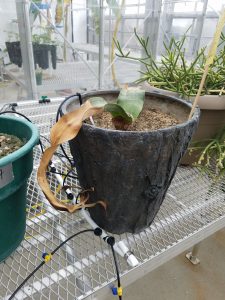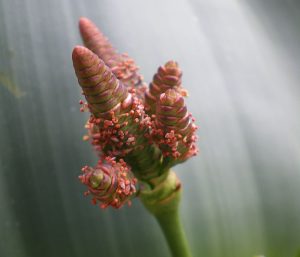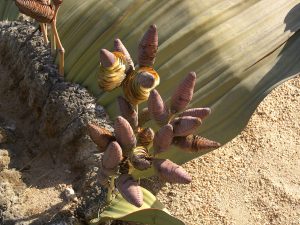Welwitschia mirabilis is a plant native to the Namib Desert. It has a unique growth pattern in which it only has two permanent leaves throughout its life, which grow extremely long throughout it’s lifespan of 400-1500 years. This is the longest-living leaf in the plant kingdom (Bornman 1977) and some welwitschia today are up to 2,000 years old (Notten 2003)!
Welwitschia is also a gymnosperm, like pines and cycads, meaning it reproduces using cones instead of flowers. Like other gymnosperms, it is dioecious, or having male and female individuals (Notten 2003). However, welwitschia is unique for having several elements typically only found in angiosperms, or flowering plants. Specifically, it has water-conducting tissues called vessel elements typically only found in angiosperms, and its male cones also have many flower-like elements (Bornman 1977).


Waluigi, the greenhouse’s welwitschia (above), male cones (bottom left), welwitschia male (bottom center), female cones (bottom right)



Bibliography
Bornman, Chris H. 1977. “Welwitschia mirabilis: structural and functional anomalies.” Madoqua 21-31.
Notten, Alice. “Welwitschia Mirabilis.” PlantZAfrica, Mar. 2003, pza.sanbi.org/welwitschia-mirabilis.